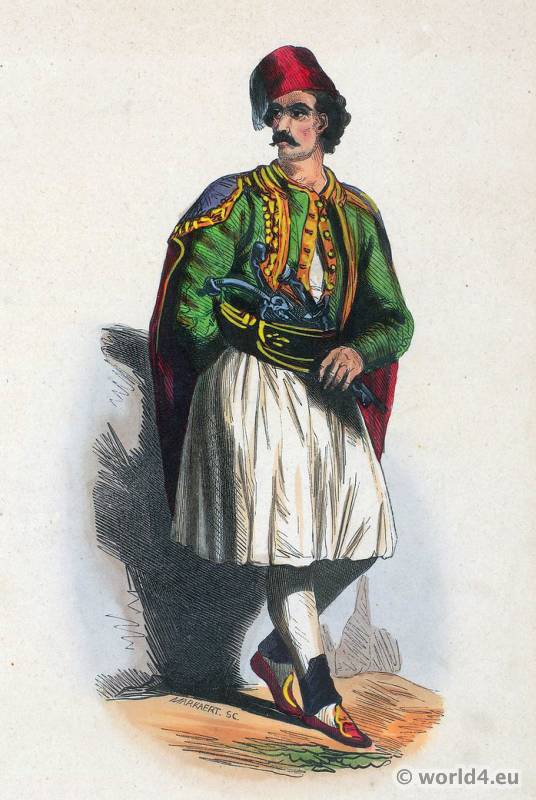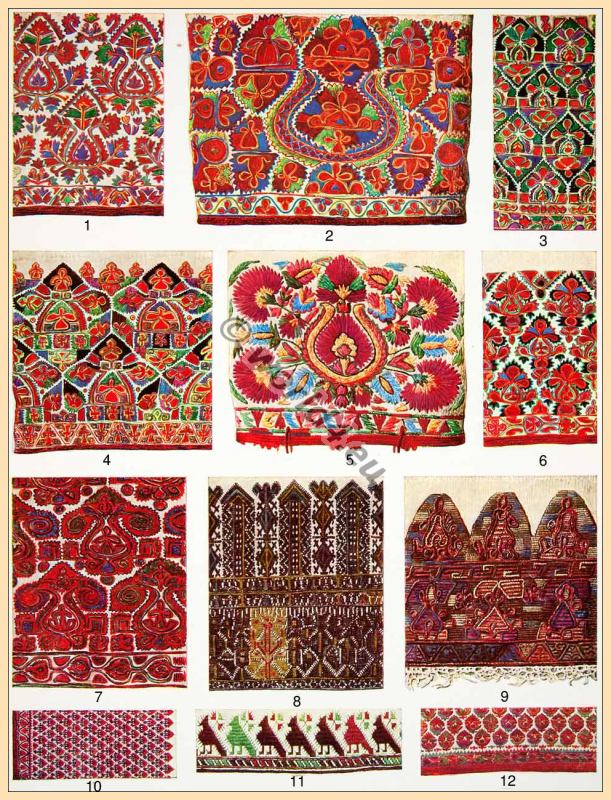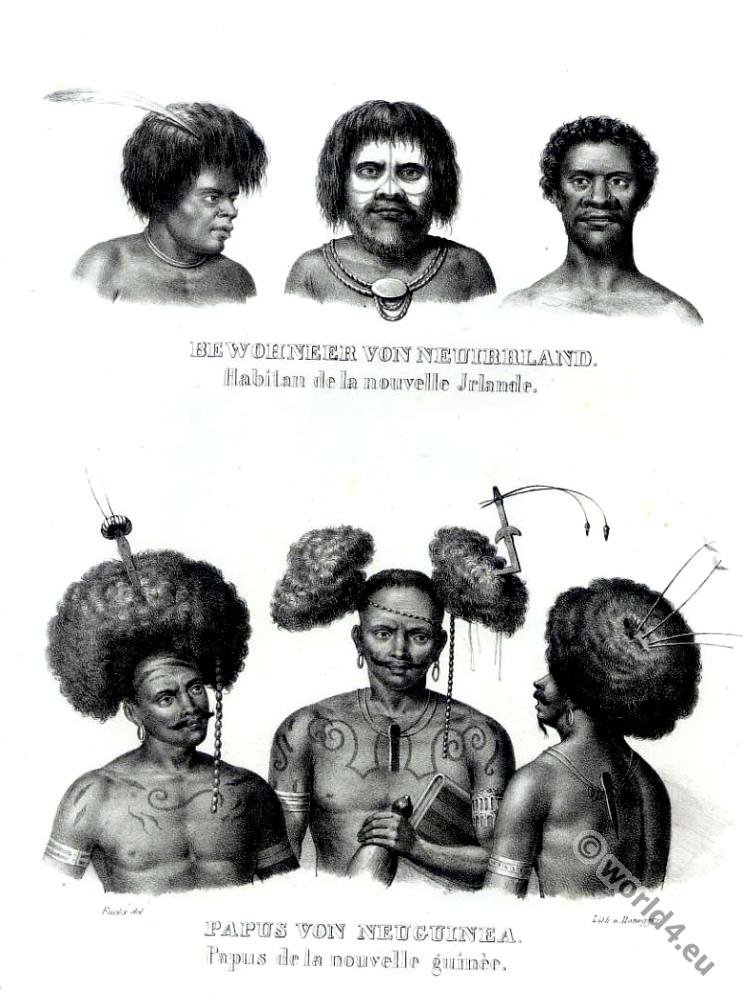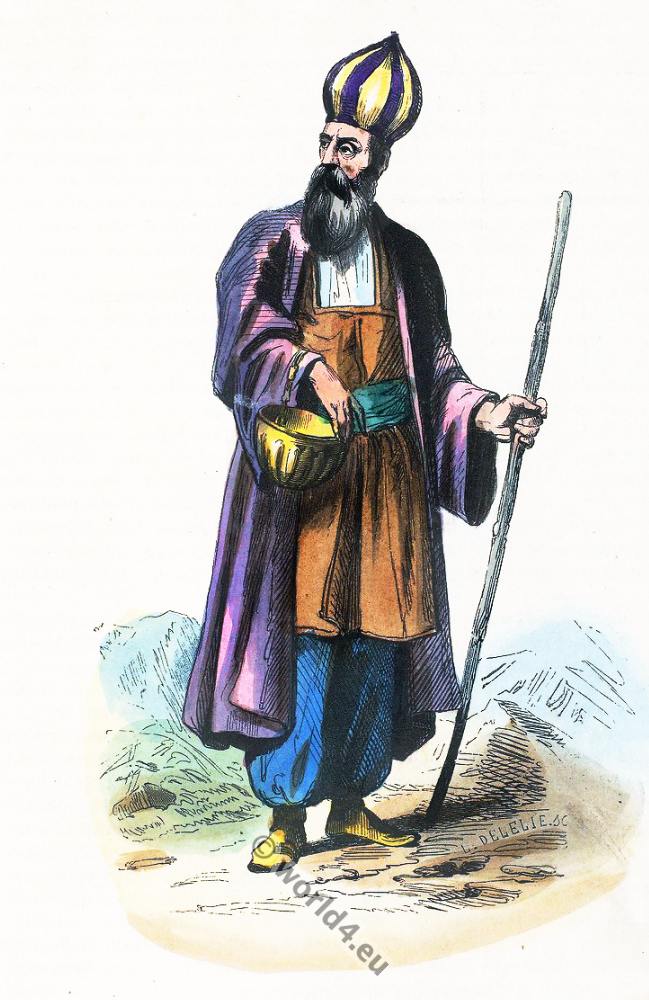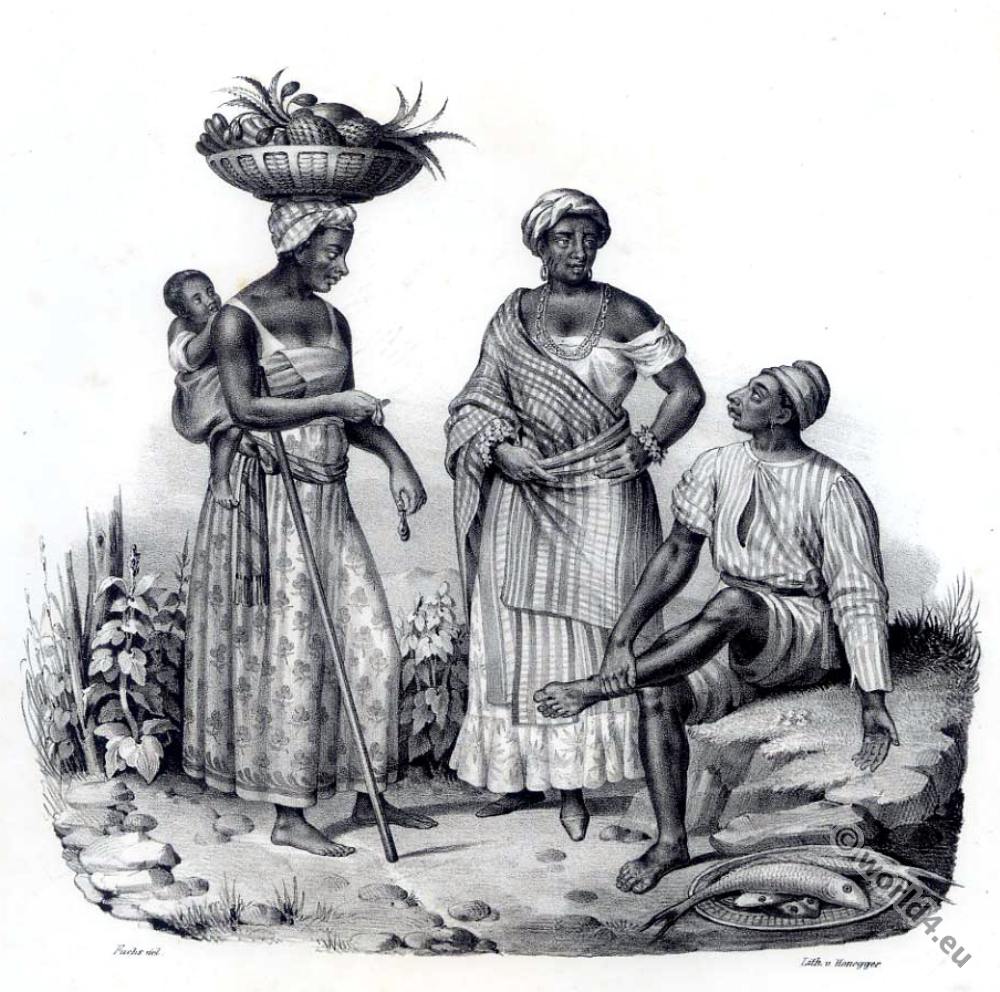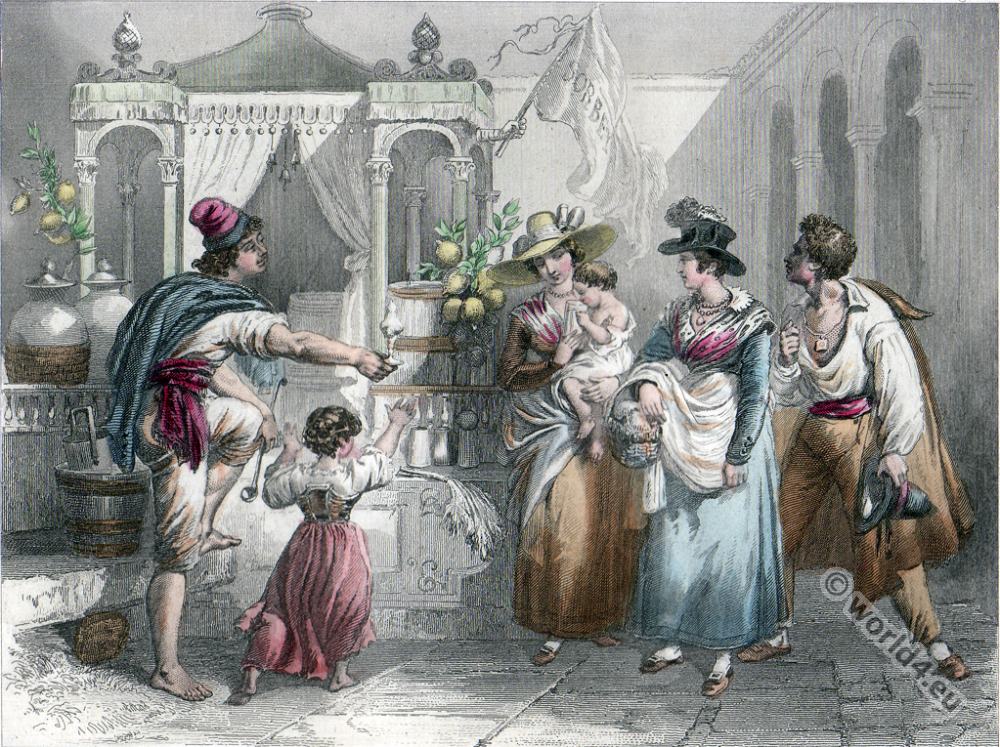Men from Greece in Fustanella.
The Fustanella consists of a shiny white pleated skirt reaching from the waist to the knees, held together by a pull over the hips. After kneeling, it changes into wide wrinkles, which are treated very carefully. The material is usually made of cotton or linen, the fabric was coarser for the peasants.
The Fustanella is a traditional men’s skirt. As a typical traditional costume, the pleated skirt is worn mainly in Albania and Greece and is known as a garment in the whole of south-eastern Europe.
The word Fustanella comes from the Italian fustagno, which means skirt or cotton flannel. This word was borrowed from the Latin fūstāneum “hard substance”, diminutive of fustis. Other name variations are in the Greek foustani, Romanian and Turkish Fistan. Formerly the garment was also called Albanese shirt.
Source: Manners, customs and costumes of all peoples of the world, based on authentic documents and and newer travel (1843) by Auguste Wahlen. (Mœurs, usages et costumes de tous les peuples du monde, d’après des documents and authentiques et les voyages des plus récents; (1843) Author: Auguste Wahlen, 1785-1850. Engrapher: François Pannemaker 1822-1900)

